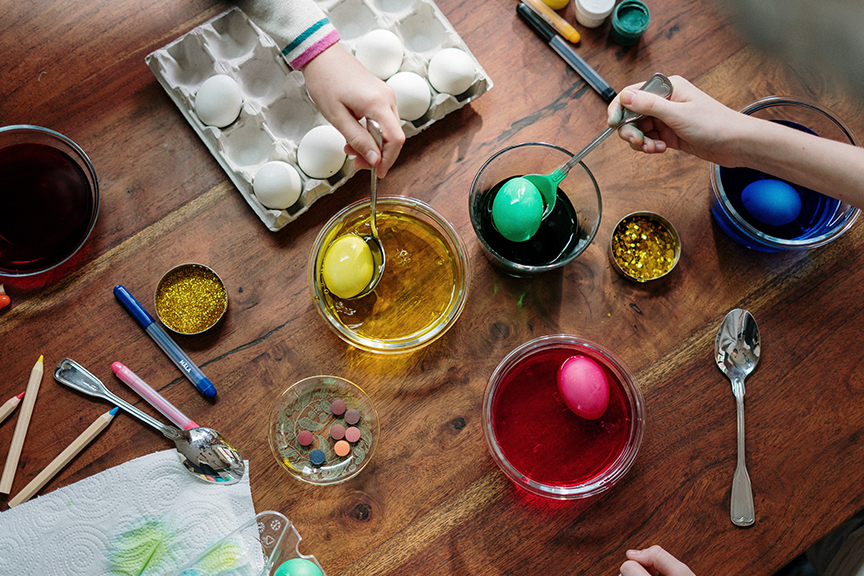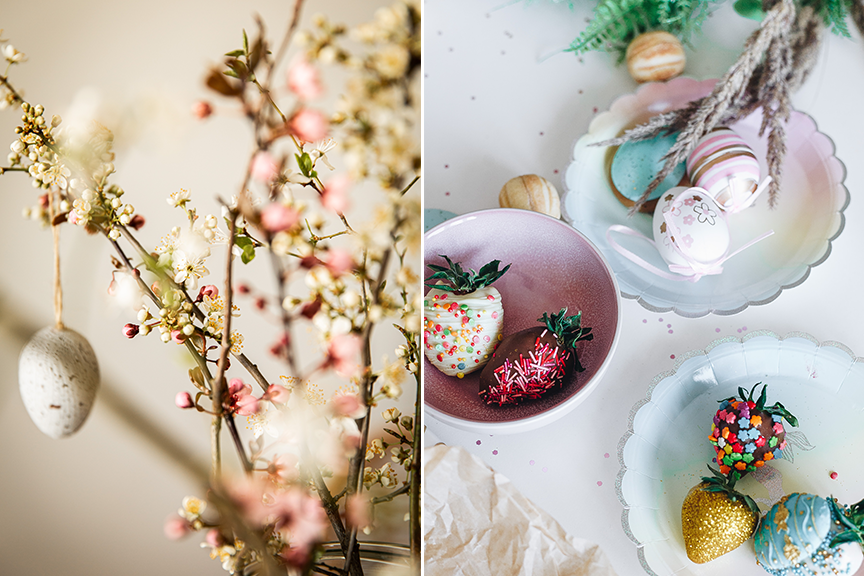Manage my booking
THE TRAVEL BLOG OF BALTIC TOURS

Easter in Lithuania
Get ready to dive into the vibrant traditions of Lithuanian Easter! From the fascinating stories behind painted eggs to the heartwarming rituals of the Easter Granny and the enchanting Easter tree, this blog post unravels the unique celebration that defines springtime in Lithuania. Join us as we explore the colorful tapestry of age-old customs and modern festivities, offering a glimpse into the magic of Lithuania's Easter celebration.



 Easter holds a significant place in Lithuania, with two universal days of unemployment every year – Easter Sunday and Easter Monday. In 2022, Easter will be on April 17th-18th. During these days, Lithuania offers exhibitions, attractions, and souvenirs like decorated eggs, national crafts, and Easter palms. It's a perfect time to learn more!
Want to learn and experience traditional Lithuanian Easter? Check out our featured tours in Lithuania.
Easter holds a significant place in Lithuania, with two universal days of unemployment every year – Easter Sunday and Easter Monday. In 2022, Easter will be on April 17th-18th. During these days, Lithuania offers exhibitions, attractions, and souvenirs like decorated eggs, national crafts, and Easter palms. It's a perfect time to learn more!
Want to learn and experience traditional Lithuanian Easter? Check out our featured tours in Lithuania.
The Origins of Easter
Easter is one of the most beautiful and important spring holidays in Lithuania, inseparable from brightly colored palms, colored eggs, and twigs of flowering trees. Each family has its Easter traditions, but do you know where it all started? Interestingly, today's celebration is associated not only with the awakening of nature but also with the joy of spring and old family traditions. Baltic Tours invites you to learn more about the festive rituals of Easter and their origins in Lithuania.
Celebration of Easter
The Easter celebration begins the week before Easter on Palm Sunday when palms, including willow twigs, juniper twigs, and dried flowers on a stick, are sanctified by the priest. After Palm Sunday, the great week follows, during which people strive to be serious and avoid arguments. Holy Thursday involves cleaning homes in preparation for Easter Sunday, and Good Friday is a day of rest and atonement for sins. On Saturday, families paint and color eggs, visit the church to bless eggs, water, bread, fire, and other Easter dishes. On Sunday, families have breakfast and dinner together, starting with eggs and other blessed foods from the church.Easter Symbols
The most important Easter symbol is the painted egg, considered a symbol of new life and rebirth. In Lithuania, it was believed that a broken egg boosted harvest and fertility, as well as promoted healing.
Easter Traditions
Egg painting is one of the oldest Easter traditions in Lithuania, dating back to ancient Egypt. In modern times, families sit down on Holy Saturday to paint or decorate eggs using techniques like hot wax, onion shells, stickers, flowers, and herbs. On Easter Sunday, families share the festive table, painted eggs, and especially with children, emphasizing the importance of eating as many eggs as possible for their healing properties.Easter Food
While eggs dominate the Easter table, Lithuanians also include a variety of cold dishes, freshly baked bread, hams, sausages, salads, sandwiches, and Easter cakes like the traditional "Boba." Traditional Easter dishes, such as roast pork with greens or lamb, have evolved, with fewer people preparing them today. Lithuanians often simplify recipes and incorporate food trends from other countries, such as fried goose.
Easter Games
No Lithuanian Easter with family members passes without Easter games. Egg hunting, egg rolling, and egg fighting are popular games, enjoyed by children and adults alike. These games revolve around finding the strongest egg and having fun with family.Easter Granny
While many countries have the Easter bunny, Lithuania has the Easter granny, a pagan legacy rooted in the Christian holiday. The Easter granny brings eggs and gifts for good children, hiding them in various places for everyone to find.Easter Tree
Few may know that Easter has a tree! The tree, made from tied spruce twigs with a nest for 9 or 12 eggs, was believed to bring happiness and success. The tree was decorated with lilac kittens, paper flowers, and bird-shaped cookies. Easter holds a significant place in Lithuania, with two universal days of unemployment every year – Easter Sunday and Easter Monday. In 2022, Easter will be on April 17th-18th. During these days, Lithuania offers exhibitions, attractions, and souvenirs like decorated eggs, national crafts, and Easter palms. It's a perfect time to learn more!
Want to learn and experience traditional Lithuanian Easter? Check out our featured tours in Lithuania.
Easter holds a significant place in Lithuania, with two universal days of unemployment every year – Easter Sunday and Easter Monday. In 2022, Easter will be on April 17th-18th. During these days, Lithuania offers exhibitions, attractions, and souvenirs like decorated eggs, national crafts, and Easter palms. It's a perfect time to learn more!
Want to learn and experience traditional Lithuanian Easter? Check out our featured tours in Lithuania.


Professionally educated and highly experienced in tourism management, Rasa is passionate about encouraging guests to explore the Northeastern region of Europe in the most attractive way. She has been working in the tourism industry since 2000, assisting customers from 64 countries, and she loves doing it!
ASK A QUESTION